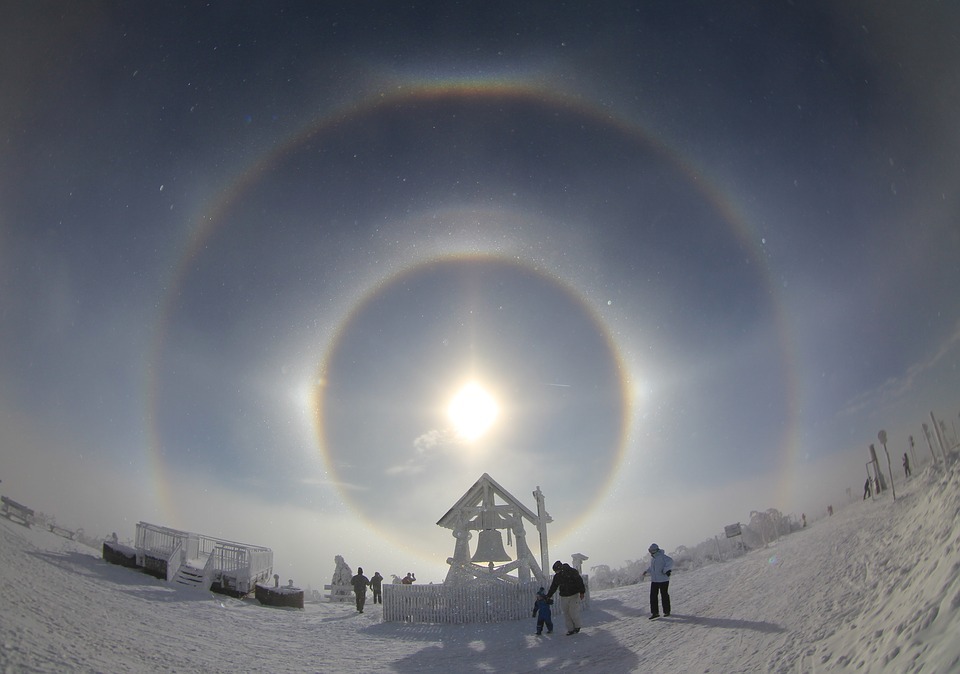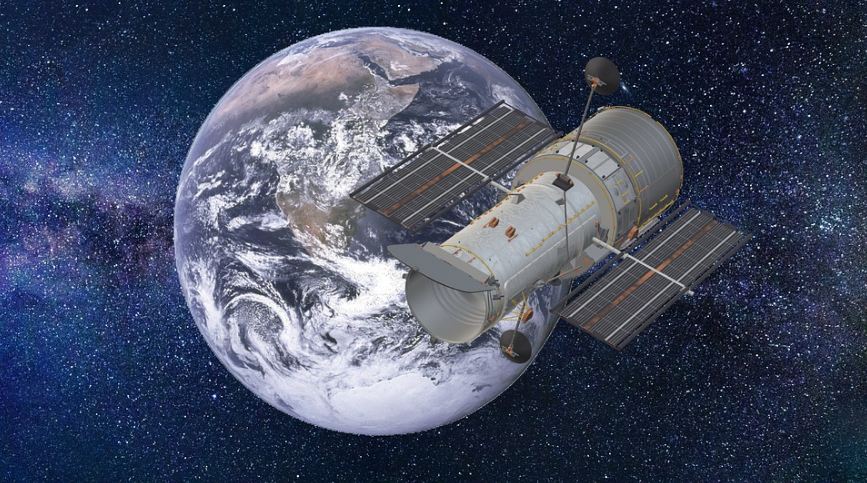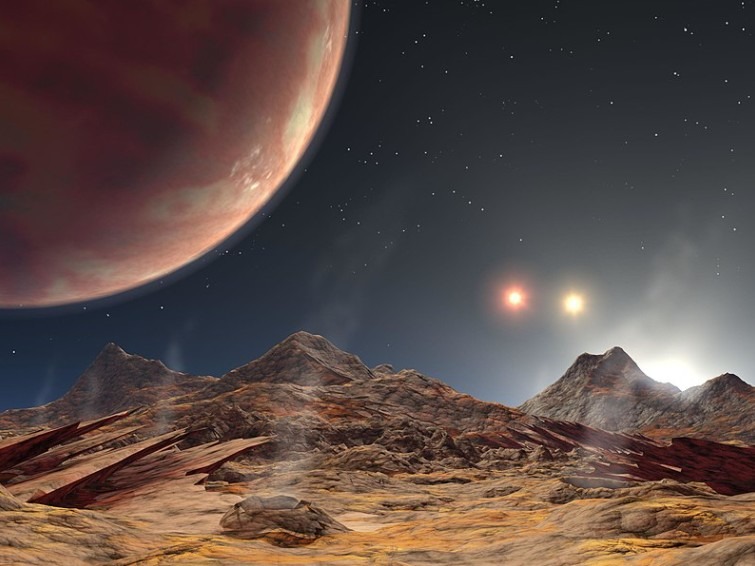What Does Gravitational Wave Detection Reveal
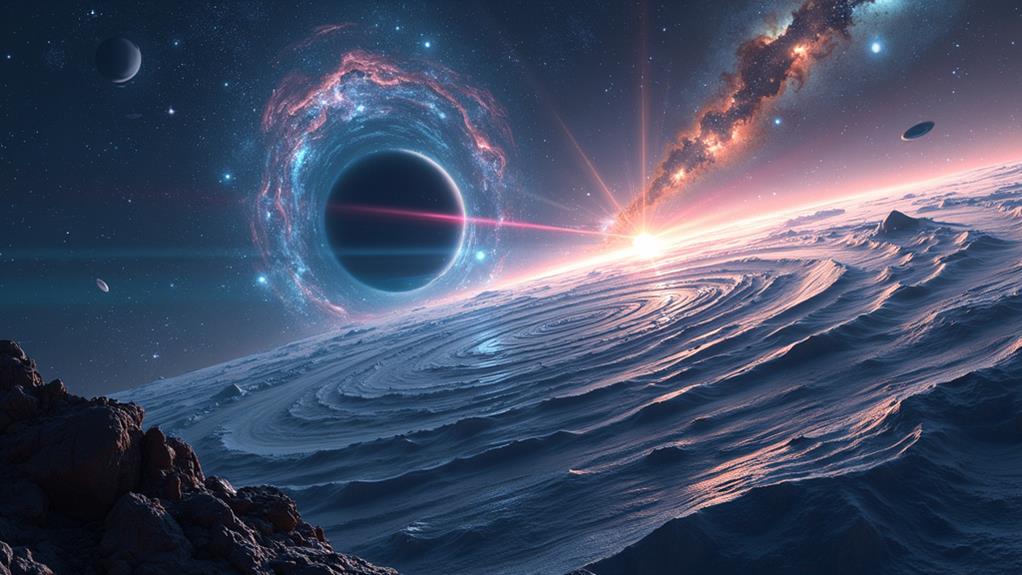
Gravitational wave detection reveals extraordinary details about the universe, especially events like black hole mergers and neutron star collisions. You'd learn that these waves confirm Einstein's theories, showing how massive objects distort space-time. This technology also helps uncover the formation of heavy elements during neutron star mergers. With advanced detectors like LIGO, capable of measuring incredibly tiny changes, scientists can now investigate previously unseen cosmic phenomena. These insights deepen your understanding of black hole mass and spin, and open new avenues in astrophysics. There's even more fascinating information waiting to be uncovered on these cosmic mysteries.
Key Takeaways
- Confirms Einstein's theory of relativity by detecting cosmic distortions.
- Reveals black hole mergers and their mass and spin characteristics.
- Initiates multi-messenger astronomy by combining gravitational waves with electromagnetic signals.
- Illuminates processes like kilonovas and heavy element formation in the universe.
- Expands understanding of neutron star interactions and cosmic nucleosynthesis.
Historical Context and Milestones
Gravitational waves, predicted by Einstein's theory of relativity over a century ago, seemed almost impossible to detect from Earth. Yet, on September 14, 2015, at 5:51 a.m. EDT, this seemingly insurmountable challenge was overcome. The initial detection of gravitational waves marked a historic milestone in astrophysics. This groundbreaking event was enabled by the Laser Interferometer Gravitational-Wave Observatory (LIGO), utilizing two identical instruments to monitor cosmic distortions. These instruments detected ripples in space-time caused by the collision of two black holes, confirming Einstein's predictions.
The announcement on February 11, 2016, highlighted the collaborative efforts of the LIGO-VIRGO partnership, ushering in a new age in astronomy. This initial detection wasn't just a triumph of technology; it represented the power of scientific collaboration. The LIGO-VIRGO team continued to achieve significant milestones, such as the initial three-detector wave detection and breakthroughs in understanding neutron stars in 2017. Each revelation has expanded our understanding of the universe, reinforcing the importance of international collaboration in astrophysics. The expedition from prediction to detection has been an extraordinary testament to human ingenuity and the relentless pursuit of knowledge.
Major Discoveries
The groundbreaking detection by LIGO in 2015 wasn't just an isolated event; it paved the way for a series of major revelations that have transformed our understanding of the cosmos. One of the most significant findings was the detection of the most massive black hole merger involving black holes of 66 and 85 solar masses, resulting in a 142 solar mass black hole. This colossal event, occurring 7 billion years ago, highlighted the rich population of black holes in the universe, with approximately 500 smaller mergers inferred for every major event detected.
The detection of a neutron star merger marked the advent of multi-messenger astronomy, combining gravitational waves and electromagnetic signals for the initial time. This breakthrough allowed for more extensive astronomical observations. The associated kilonova phenomena provided essential insights into cosmic nucleosynthesis, revealing how heavy elements are formed in the universe.
Additionally, observations of black hole vibrations have confirmed predictions about their mass and spin, offering empirical validation of Einstein's theories. These major findings have not only deepened our understanding of black holes and neutron stars but have also opened new avenues in studying the fundamental processes of the universe through gravitational waves.
Technological Advances
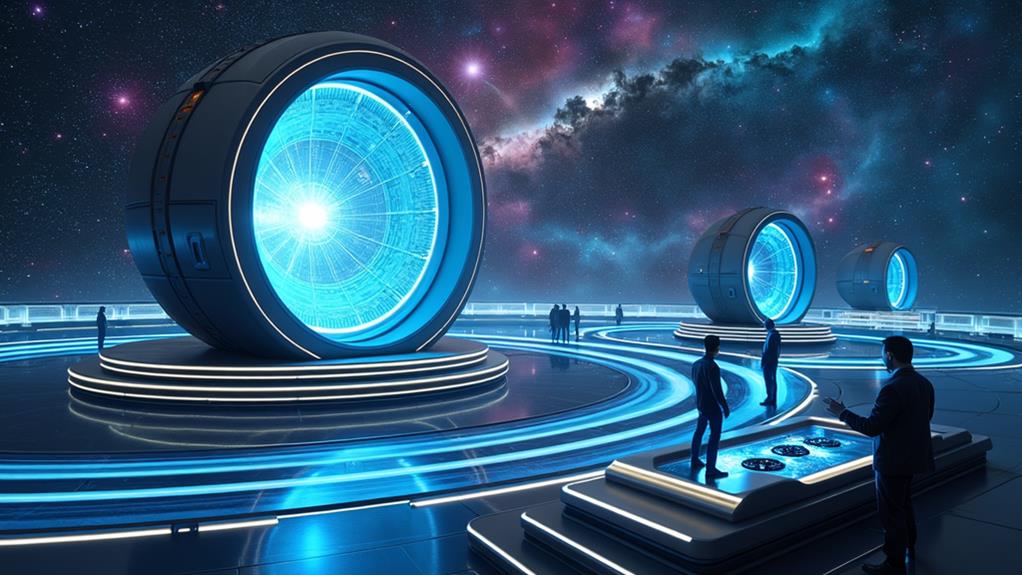
Modern technology has transformed the field of gravitational wave detection, dramatically improving our ability to observe these cosmic phenomena. The Advanced LIGO (Laser Interferometer Gravitational-Wave Observatory) features enormous L-shaped interferometers, each arm stretching two-and-a-half miles (4 km). These interferometers detect minute changes smaller than 10^-19 meters, showcasing a remarkable leap in sensitivity.
LIGO achieves this precision by splitting laser light into two beams and monitoring their paths. These beams travel through vacuum tubes, minimizing environmental interference and ensuring accurate measurements. To further enhance detection capabilities, LIGO employs quantum squeezer technology. This advanced tech reduces background noise, allowing for even more sensitive observations of gravitational waves.
The upgrades completed in March 2019 have greatly improved LIGO's sensitivity, doubling its previous capability. Now, LIGO can detect gravitational waves from events up to 140 megaparsecs away. This jump in sensitivity means that weekly detections of gravitational waves have become a reality, propelling research in astrophysics to new heights.
Thanks to these technological advances, you're witnessing a period where observing gravitational waves has become routine, continually revealing the mysteries of our universe.
Significance and Recognition
Revelation strikes when you realize the profound impact gravitational wave detection has on our understanding of the cosmos. The detection of gravitational waves has opened new windows into cosmic events, fundamentally altering how you perceive black holes and neutron stars. Through LIGO's groundbreaking work, you can now witness the dance of these celestial giants, backed by empirical evidence that was once purely theoretical.
The recognition of these revelations was solidified when the Nobel Prize in Physics 2017 was awarded, celebrating the collaborative efforts of LIGO scientists. This accolade underscores the monumental strides made in scientific knowledge, driven by the successful detection of gravitational waves.
Kilonovas, observed through these detections, have illuminated the process of heavy element formation, linking them directly to neutron star collisions. It's astonishing to think how these cosmic events contribute to the very matter that makes up our world. Furthermore, the identification and analysis of gravitational waves have introduced new physics concepts, reshaping our understanding of the universe.
Public interest in gravitational waves has surged, highlighting the importance of federally funded research. This collective curiosity and investment in scientific exploration guarantee continued advancements and deeper cosmic revelations.
Future Prospects
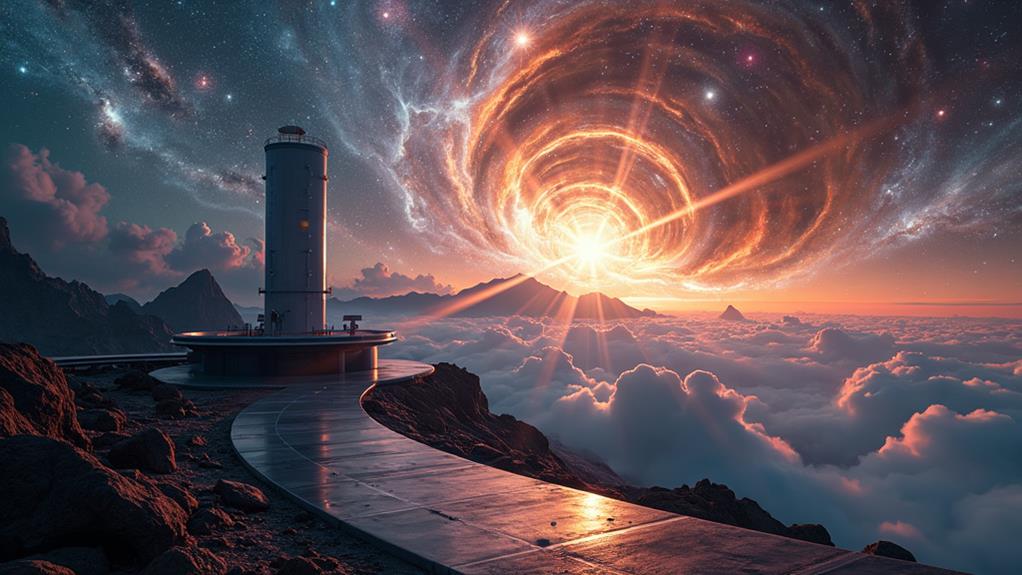
Looking ahead, future advancements in gravitational wave detection promise to revolutionize our understanding of the universe. Projects like the Cosmic Explorer aim to considerably increase the sensitivity and range of observations, potentially allowing you to detect gravitational waves from cosmic events at the edge of the universe. These improved observational capabilities will likely lead to the identification of more black hole mergers and neutron star collisions, thereby expanding the dataset available for astrophysical research.
Collaborative efforts among institutions such as MIT and Caltech will refine techniques for identifying and analyzing these cosmic events. This will not only further our understanding of the universe's expansion but also reshape our comprehension of fundamental physics. By providing insights into strong gravitational fields and the behavior of extreme cosmic phenomena, these advancements will push the boundaries of what we understand.
Continuous technological improvements are projected to facilitate multi-messenger astronomy, which combines gravitational wave data with electromagnetic observations. This integration will enable you to create a more thorough picture of cosmic events, improving your ability to study the universe in unprecedented detail. Gravitational wave detection is poised to transform how we investigate the cosmos.
Frequently Asked Questions
What Do Gravitational Waves Show Us?
Gravitational waves show you incredible insights into black holes and neutron stars. They disclose cosmic events like merger events, revealing how space-time ripples through wave propagation. They highlight astrophysical phenomena, leading to scientific advancements and new observational techniques. These waves confirm theoretical implications of general relativity and expand your understanding of the universe. By studying them, you gain a clearer picture of the universe's dynamic and often violent nature.
What Would the Gravitational Wave Background Tell Us About the Universe?
Imagine uncovering that black hole mergers happen more frequently than previously thought. The gravitational wave background tells you about the origins and cosmic evolution of these events. By studying neutron star collisions, you gain insights into the early universe and dark matter. This background helps you test fundamental physics theories and understand the space-time fabric. Multi-messenger astronomy reveals astrophysical sources, enhancing your knowledge of the universe's grand tapestry.
What Is the Significance of a Gravitational Wave?
The significance of a gravitational wave is immense. You can observe cosmic collisions between black holes and neutron stars, shedding light on universe expansion and stellar evolution. These waves help unravel mysteries of dark matter and gravitational lensing. By studying astrophysical mergers, you gain insights into space-time and quantum gravity. Gravitational waves offer a new perspective on the universe's dynamics, enriching your understanding of its fundamental processes.
What Have We Learned From Gravitational Wave Observations?
You won't believe what we've revealed from gravitational wave observations! We've peered into the secrets of black holes and neutron stars, witnessing cosmic collisions that shake the early universe. By analyzing waveforms from merger events, we've learned about gravitational lensing and groundbreaking detector technology. Multi-messenger astronomy now links these signals to astrophysical phenomena, offering unparalleled insights into the universe. It's a new age of revelation, thanks to these incredible observations!

